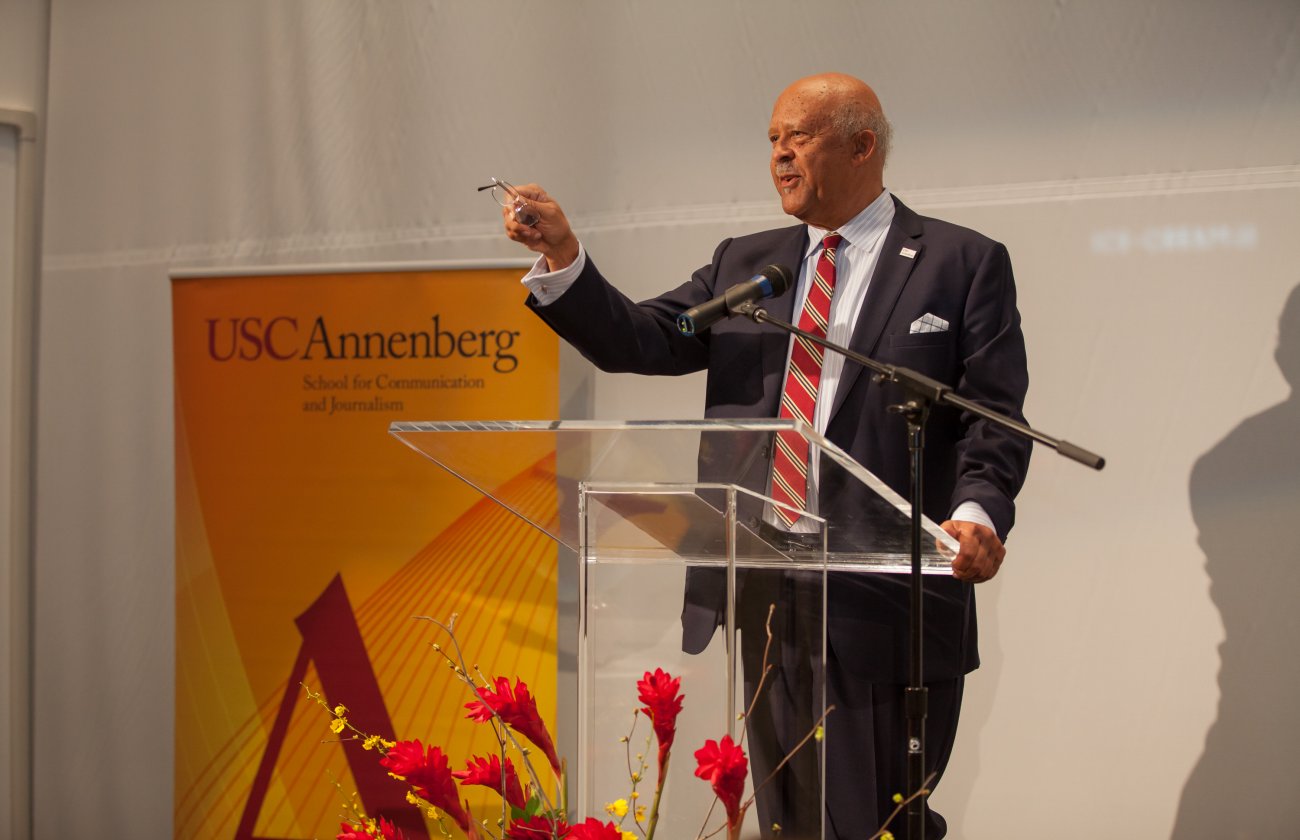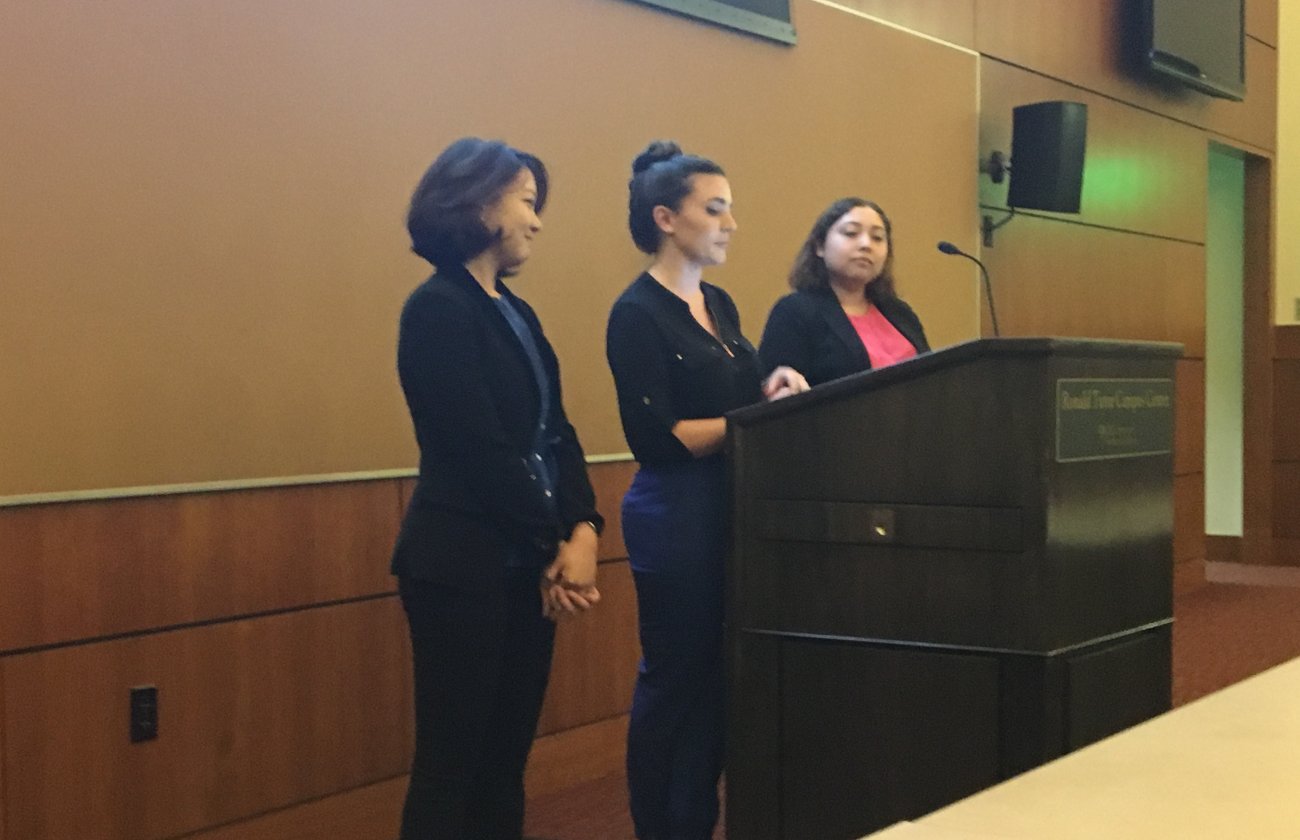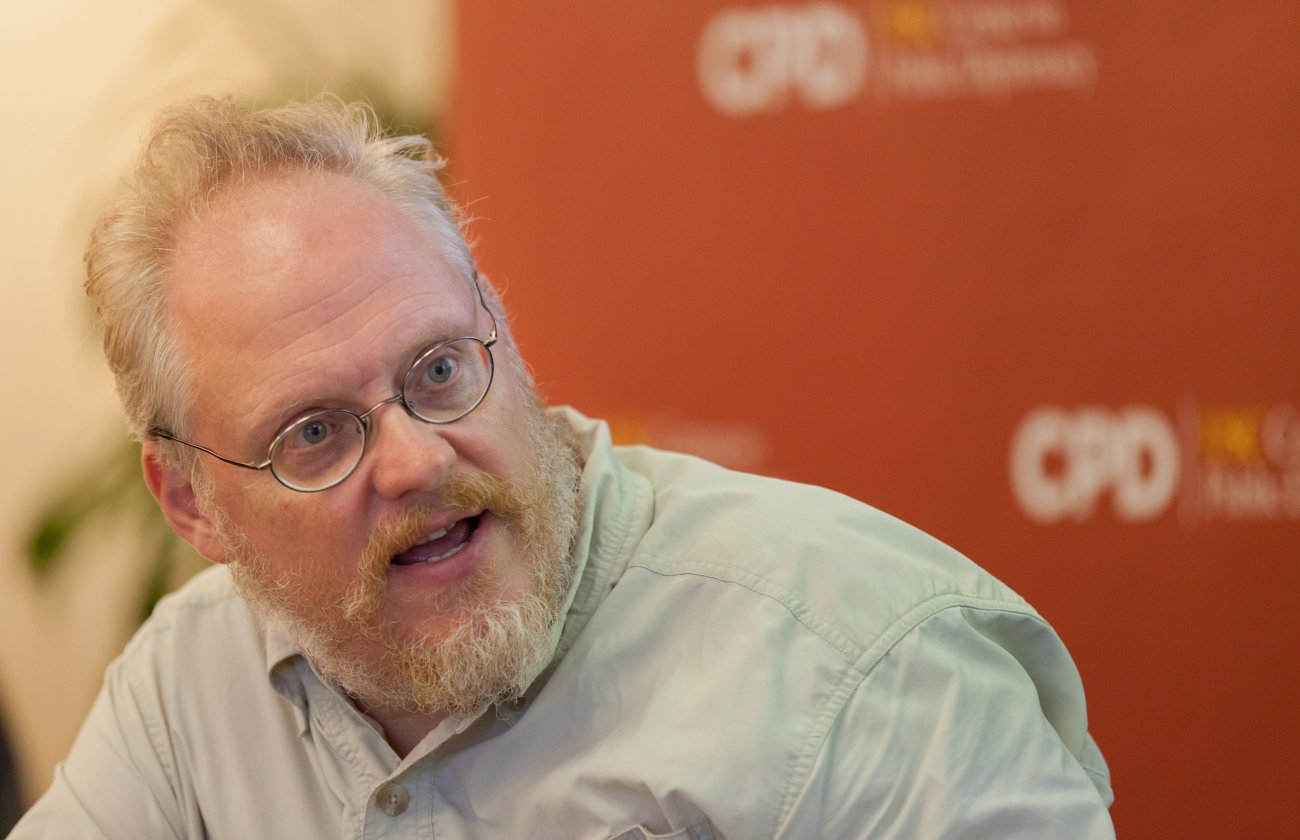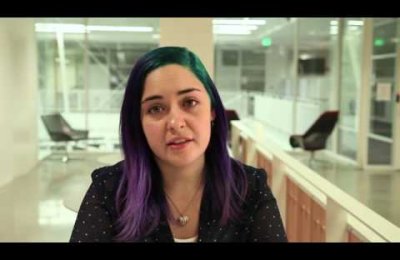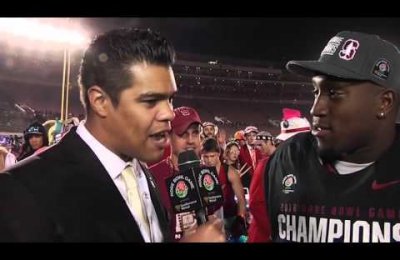By Gretchen Parker
Offering a perspective from the “front lines” of journalism, veteran Washington reporter Judy Woodruff gave an insider’s view of how public broadcasting has transformed to adapt to a changed news world, as she delivered the James L. Loper Lecture in Public Service Broadcasting at USC on Thursday.
Woodruff introduced her talk by saying she’s likely the first-ever Loper lecturer to Tweet about her speech and her arrival in Los Angeles late Wednesday. Her immersion in social media illustrates how much her job has changed since her first tour at PBS three decades ago, she said. In the meantime, she worked as an anchor and senior reporter for CNN for 12 years before returning to PBS in 2007 to work for "PBS NewsHour." She’s now co-anchor of the program.
“It’s not your father’s public broadcasting anymore,” she said. “And that’s a good thing.”
She quoted President Lyndon Johnson, who said in 1967 while signing the Public Broadcasting Act into law: “While we work every day to produce new goods and to create new wealth, we want most of all to enrich man’s spirit. That is the purpose of this act.”
And 45 years later, that’s still at the heart of what public broadcasting does. It aims “to educate, entertain and inform… to make us better citizens,” Woodruff said, addressing an audience of students, faculty members and leaders of Los Angeles-area media who gathered at USC’s Ronald Tutor Campus Center.
PBS remains uniquely trusted and accessible, she said.
“But we’re also changing. We come to you in more than one dimension.” As "NewsHour" adapts, “we’re better at what we do,” Woodruff added.
The legendary program has become even more accessible, through Facebook, Twitter and its iPhone app. Beyond that, "NewsHour" developed a tool that measured the amount of oil that flowed into the Gulf of Mexico after the BP disaster last summer – a tool that was widely picked up and used by journalists worldwide.
The news program has used Skype to reach citizens in Syria and Libya who can’t safely leave their homes; it has used Google+ Hangout to join voters nationwide and hold an analysis of the State of the Union address.
It’s not just technology for technology’s sake, Woodruff said. She explained exactly how new it has advanced broadcast journalism. Instead of being held back by heavy cameras and lights – tools of the broadcasters’ trade – broadcasters are now able to gather material via these new devices.
“We can go where our sources are,” she said. “As a result, our stories are more textured and nuanced and better sourced by the people who are living them.”
At the same time, the new tools help fill the gap left by shrinking funding, when reporters can’t travel to interview every source, Woodruff said.
News organizations, she said, “are being asked to do a lot more with a lot less.” “We at 'NewsHour' are very focused on filling the funding gap we have, along with everyone else.”
And even though the challenges facing reporters have never been greater – while national and international news has never been more complicated – she remains dedicated along with her colleagues and so many other journalists.
“We don’t have the option of just disappearing, throwing our hands up in the air and saying, ‘We can’t do this. It’s too expensive. It’s too complicated. It’s changing too fast,’” she said. “Those of us who care about informing the public don’t have the option of stepping away.
“We bring an enthusiasm and determination to get the story right and to serve the American people that I can promise you is not going away.”
So even though it’s no longer “your father’s public television,” it’s much more than that, Woodruff said. “And we have never been more needed than we are today.”
During a Q&A that followed the speech, students tapped Woodruff’s perspective as a longtime political reporter.
Udeitha Srimushnam, a USC Annenberg communication management master’s candidate, said racist and sexist tones underlying the rhetoric of the current election season seem unusual and asked what could be the cause.
Woodruff responded that “politicians used to be able to get away with a lot more,” reminding the audience of the Willie Horton ads used against Democratic Presidential candidate Michael Dukakis in 1988.
Sexism and racism “is still there, and candidates and members of Congress slip over the line all the time, but I think we’re doing better than we used to,” pointing out that now when it happens: “it gets picked up, it becomes part of the conversation, and the person who has done it has to apologize.”
Logan Heley, a broadcast journalism student, asked Woodruff about the most exciting story she’s ever covered.
She recalled election night 2000 as “exciting” and “unbelievable,” when CNN along with all the other major networks called the race for Al Gore (erroneously) and then for George W. Bush (again, erroneously). The outcome wasn’t known for another 36 days.
“No one in our business had ever seen anything like it,” said Woodruff, who was anchoring CNN that night along with Bernard Shaw. “And it really did cause some soul searching in the news media, because we were so dependent on exit polling… I hope we learned something from that. We’re all a lot more careful in calling elections now. What is the rush? I have some friends in this business who would say they want to be right, but it’s all about being first. I respect that, but to me it’s not nearly – not nearly – as important as getting it right.”
The James L. Loper Lecture in Public Service Broadcasting, inaugurated in 2005, honors Loper, a longtime USC Annenberg professor and his four decades of service to public broadcasting. Funding comes from the H. Russell Smith Foundation.

